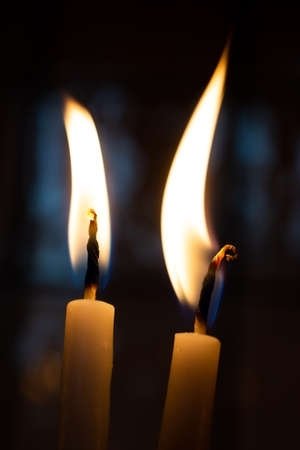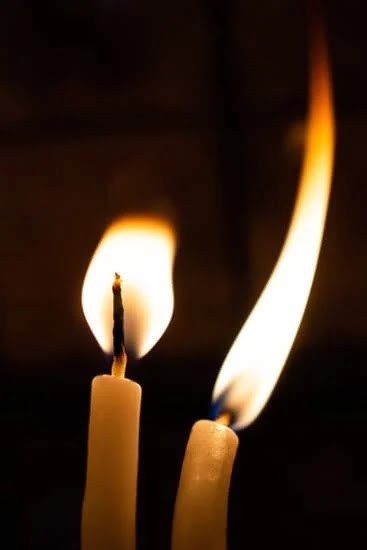Introduction
For those looking to craft the perfect candle, drying the wax is an essential step in the process. This section will provide an overview of candle wax and how long it typically takes for it to dry.
Types of Wax: Most candles are made using three different types of wax – paraffin, beeswax, and soy. Paraffin is derived from petroleum and is considered to be the most common type of wax used in candle production. Beeswax has natural properties that make it an ideal choice for container candles as it doesn’t shrink or distort when heat is applied. Soy, while popular in recent years due to its natural origins, requires special preparation before being used for creating candles in order to increase their burning times.
Drying Times: Depending on the type of wax used, there can be a difference in the time it takes for wax to dry. Generally speaking, paraffin and soy will take about 5-9 minutes to harden after being melted and applied to wick. Beeswax may take longer due to its thicker nature; it will usually take 10-15 minutes until it becomes solidified enough for use.
Conclusion: Knowing what type of wax you plan on using and accounting for its drying time when crafting your candle is important. With this information at your disposal, you can more accurately estimate the necessary duration needed before your candle is ready!
What is Candle Wax?
Candle wax is a material made from a variety of different substances that is primarily used in making candles. It can be derived from either natural or synthetic sources, with the most common types being paraffin wax and beeswax. Candle wax usually has a melting point between 45 and 65 degrees Celsius and can come in a variety of colors.
In terms of how long it takes for candle wax to dry, it usually depends on the thickness of the wax and the temperature of the air in the room it is drying in. Generally, if the wax is thin (less than 1/8 inch) then it will take anywhere from 15 minutes up to 2 hours to completely dry. If you are using thicker layers, such as those found in larger pillar candles, then these may take up to 4 or 5 hours to completely dry. It’s also helpful if you keep your home warm when dealing with thick layers as heat helps speed up the process. Upon completion, you should be left with harder and more durable wax that won’t bend or warp when touch or exposed to heat sources.
How Candle Wax Is Used
Candle wax is a key ingredient in the art of candle making and it provides the necessary structure and burning properties to create a successful candle. The primary ingredients used to make candles are wax and wick. The wax acts as both fuel and a binding agent, while the wick brings oxygen to the flame so that it can continue to burn. For a candle to burn properly it needs enough structure from the wax to hold it in place while also allowing proper oxygen flow into the flame.
When making candles, each type of wax will have a different melting point and will solidify at a different temperature after poured in the container or mold. This means that each type of wax takes different amounts of time for it to completely dry before being lit. Generally, made from vegetable sources such as soy or beeswax, most candle waxes require up to 2 hours for them to set before being lit. Some types of paraffin-based waxes may take less time; however, due to its chemical makeup, these types may have weaker surfaces which can cause problems during long run-time burns. As no two types of candle wax are exactly alike, be sure to refer specifically for directions on how your specific type should be used when crafting candles.
Benefits of Using Candle Wax
Candle wax can be a great natural product to work with for a variety of home crafting projects. Whether you are creating candles, making art, or wax sealing letters, candle wax can open many doors for creativity. Additionally, it is quite an affordable material with seemingly endless possibilities. On top of that, it dries quickly and easily. Depending on the climate and the thickness of your candle wax layer, it usually takes around 10 minutes to dry after application. Of course, ensuring there is proper ventilation will help speed up the process. There are a few benefits to making use of candle wax as opposed to traditional hot glue when crafting:
• Candle wax allows for intricate designs that would otherwise be too difficult with regular glue
• It is safer than hot glue since there is no heat involved and you may avoid any burning rash if using a thicker coat
• Since it comes in various colors and forms such as pellets or chips, you can customize according to your project
• Unlike regular glue which takes hours to harden and become rigid enough for disassembly , most craft projects involving candle wax become ready within minutes due to its quick drying property
• Lastly, once applied, candle wax provides enough stability without being overly sticky.
Understanding Different Types of Candle Wax
Candle wax is one of the most common ingredients used to make candles and each type requires a different amount of time to fully dry. For example, Beeswax is a very popular choice, but it can take several days to several weeks for the wax to be completely dried and hardened. Paraffin waxes are typically much faster to dry, usually just a few hours after pouring, as long as temperatures remain warm enough for the wax to harden properly. Gel waxes also often take a short amount of time – about overnight – to dry completely, although this can depend on ambient temperatures.
Soy and palm waxes, on the other hand, generally require more time. They often need 12-24 hours in average room temperatures before they are ready for burning. It’s important to understand that higher levels of humidity or cooler temperatures can slow down the drying process; conversely, lower levels of humidity and warmer temperatures will speed up the process.
Once your newly poured candle has taken the desired amount of time needed for drying, you should be able to extinguish and light it without any further delay. If possible, it’s recommended that you check on your newly poured candles periodically while they’re curing; this helps prevent any potential problems from occurring with areas that may not have dried properly or been exposed too cool air while transitioning from liquid state into solid form. Additionally, if certain undissolved dyes or colorants are present in your mix before pouring them into molds and containers these could pool at the wick line due an imbalance in cooling rate which could affect livening your candle correctly, so careful attention is required as well during wax hardening period prior lighting them or fixing them onto gift baskets for presents.
How Long Does Candle Wax Take to Dry?
The amount of time candle wax takes to dry depends on a variety of factors, such as the type and thickness of the wax, size of the candle, and ambient temperature. Generally speaking, you can expect larger candles to take a bit longer to dry than smaller ones. Also, thinner layers of wax will tend to dry faster than thicker layers. If all other factors are equal, a thicker candle wax layer should take approximately 30 minutes to an hour to fully dry, while a thinner layer may only need 15 minutes or less. The room’s temperature can also affect the amount of time it takes for the wax to completely dry; cooler temperatures will slow down the drying process whereas warmer temperatures will cause it to progress quicker. Therefore, leaving your candles in a warm environment with good air circulation is typically your best bet for properly drying out your candle’s wax quickly and efficiently.
Factors That Affect Wax Dry Time
The amount of time it takes for candle wax to dry can be affected by a number of different factors, including the temperature and humidity of the room where the candle is being stored. Warmer temperatures and lower humidity will allow the wax to dry faster while cooler temperatures and higher humidity tend to slow down this process. Additionally, a candle’s size and overall shape can also affect its drying time; containers with small opening and large surface areas tend to dry slower than other shapes. The type of wax used in a candle can also influence its drying time; soy wax tends to be easier to work with but requires longer drying times compared to paraffin or beeswax candles which tend to be harder. Additionally, adding additives such as dyes or fragrances can also have an impact on how quickly the wax sets up. In general, most types of wax usually take around 24 hours or more before they are completely dry.
Tips to Help Speed Up Drying Time
To help increase the speed of drying time for candle wax, try these tips. First, make sure to give the candle plenty of ventilation when burning. Burning a candle for too long or in an enclosed space can slow down the wick’s drying process. Second, if you can, move the area where you are burning the candle to a warmer room or position away from drafts and fans that could cause cooling and disruption in your environment. Third, allow at least two hours between lighting candles so that there is enough time for it to completely cool and dry before using again. Finally, make sure that you choose high-quality candles like soy or beeswax rather than petroleum-based waxes as these will have quicker drying times due to the higher melting point.
Troubleshooting Common Challenges with Drying Candle Wax
The time that candle wax takes to dry can vary based on the temperature and humidity levels of the environment. Wax is not a true liquid; it is a combination of solid and liquid properties, so at room temperature, it will take some time to harden. Low temperatures can extend the drying time, while high humidity levels can also increase how long it takes for wax to properly dry and harden. When trying to dry candle wax in less-than-ideal conditions p, there are certain methods you can use in order to expedite the process:
1. Use a fan – A fan pointed toward your candles can help circulate air around them more quickly, allowing more rapid evaporation of any lingering moisture.
2. Turn up the heat – Putting your candles in a warmly heated space like your oven (at low temperatures only!) will without a doubt speed up the drying process, but do use caution!
3. Lessen shades & shadows – Ensure that sunlight or bright lamps shine down on your candle creations in order for maximum illumination and even distribution of heat. Any patches where direct light does not reach will be harder for wax to dry out evenly and faster.
4. Patience = reward – Sometimes we just have to wait for Nature’s help in order for our candles and waxwork masterpieces to be finished—make sure you are patient and persistent if this should occur!
Safety Tips to Consider When Working with Candle Wax
When working with candle wax, always make sure that the surface you are working on is dry and clean. Wear long sleeves and gloves to protect your skin from being burned by hot wax. Place a sheet of aluminum foil or parchment paper beneath the area you’re working in to help contain any spills. Keep a spray bottle of water nearby in case of any accidents while melting the wax; it will cool off the melted wax quickly. After pouring the wax onto your project, it will typically take anywhere from 4 – 10 hours for the candle wax to dry and fully harden. Do not attempt to move or pick up the object until it is completely dry and hardened. If needed, you can use a heat gun set at a low temperature to help speed up the drying process, but this should only be done if absolutely necessary as too much heat can cause discoloration or distortion of your completed project.
Conclusion
Candle wax will take between one and two hours to dry. Depending on the size and composition of the candle, this can range from minutes to several hours. The time it takes for the wax to dry will depend primarily on environmental factors such as the temperature of the room and the humidity in the air. Materials used in candle making can also influence drying time; some waxes may be faster to dry than others because they are more porous or have different densities. Additionally, additives such as color dyes or fragrances can affect drying times as well. Finally, factors like container size, wick type, and pouring technique all play a role in determining how long it takes for candle wax to dry completely.

Welcome to my candle making blog! In this blog, I will be sharing my tips and tricks for making candles. I will also be sharing some of my favorite recipes.





